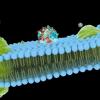I tried C60 (BuckyLabs - 1.7mg) for the first time at 8am in the morning with breakfast on May 9th and as a 26yo I haven't experienced an increase in energy or any mental improvements. So far (30 hours later) C60's effects are virtually unnoticeable in normal daily life.
However, I can use this phrase to characterize my workouts on C60 so far: There is no burn!
I haven't tried any aerobic workouts yet but my anaerobic workouts have become effortless. The first one was at about 2pm that afternoon (90 degree heat) while test riding Trek roadbikes. I noticed that I could peddle at maximum effort without feeling any burn and I literally got bored of peddling with max effort before I got tired (I didn't know this could happen). However, I still got tired, because when I took the second bike (a much lighter bike) out for a ride, I couldn't put forth the same effort (Still no burn). I attribute the effect of the lost power on the second ride to the amount of water I lost on the first ride. The second workout was 5 sets of push ups done about 26 hours after the C60 dose. During this workout, I normally do these with maximum intensity and speed while feeling the burn starting at the end of the first set. This burn then persists midway through the second set and again a few repetitions into the 3rd set making the last two sets absolutely hell, with speed and intensity dropping off rapidly in the middle of the 3rd and throughout 4th set. During today's push ups, I did the fifth set with the same intensity and speed as the first set while increasing the amount of reps in each set by 50% over the last time I did push ups two weeks ago, (there was still no burn!) on top of that I felt like I could have done another 5 sets, because I wasn't tired afterward.
This leaves me wondering whether or not these C60 workouts (where I am doing much more work) are as effective as my much harder non-C60 workouts (where I feel the work much more)? Does anyone have any input?
Is this a case of no pain no gain?
Thanks


















































